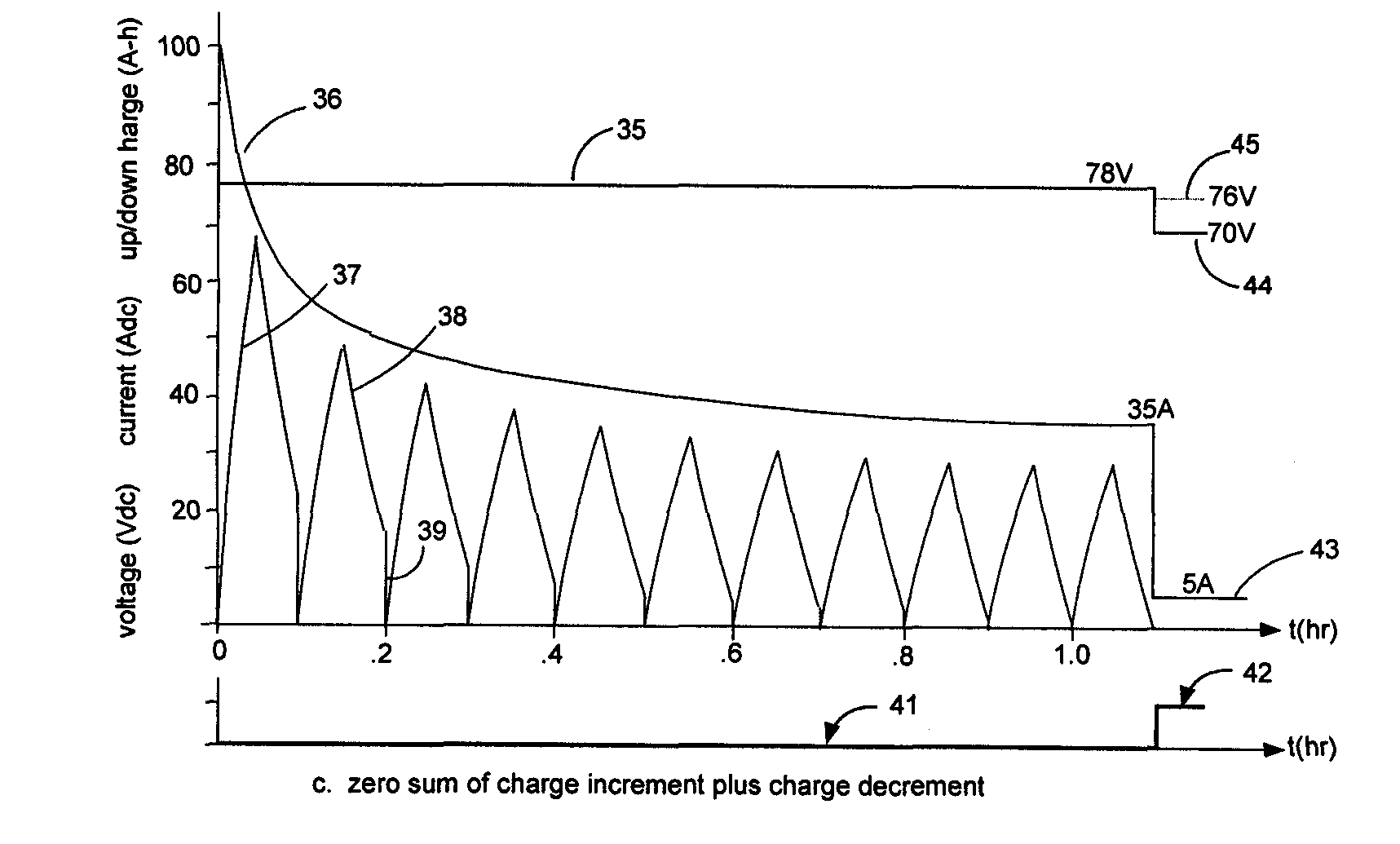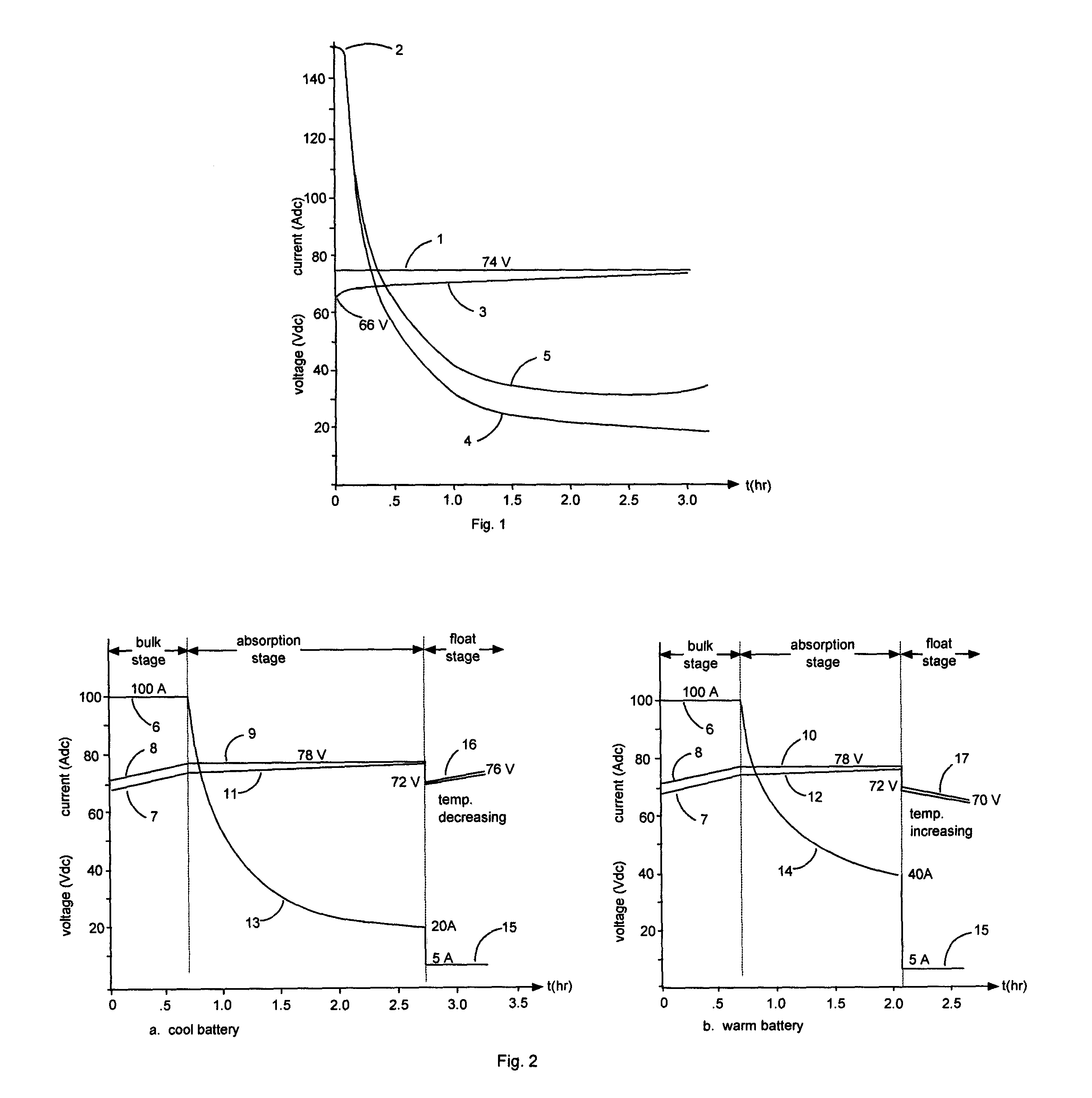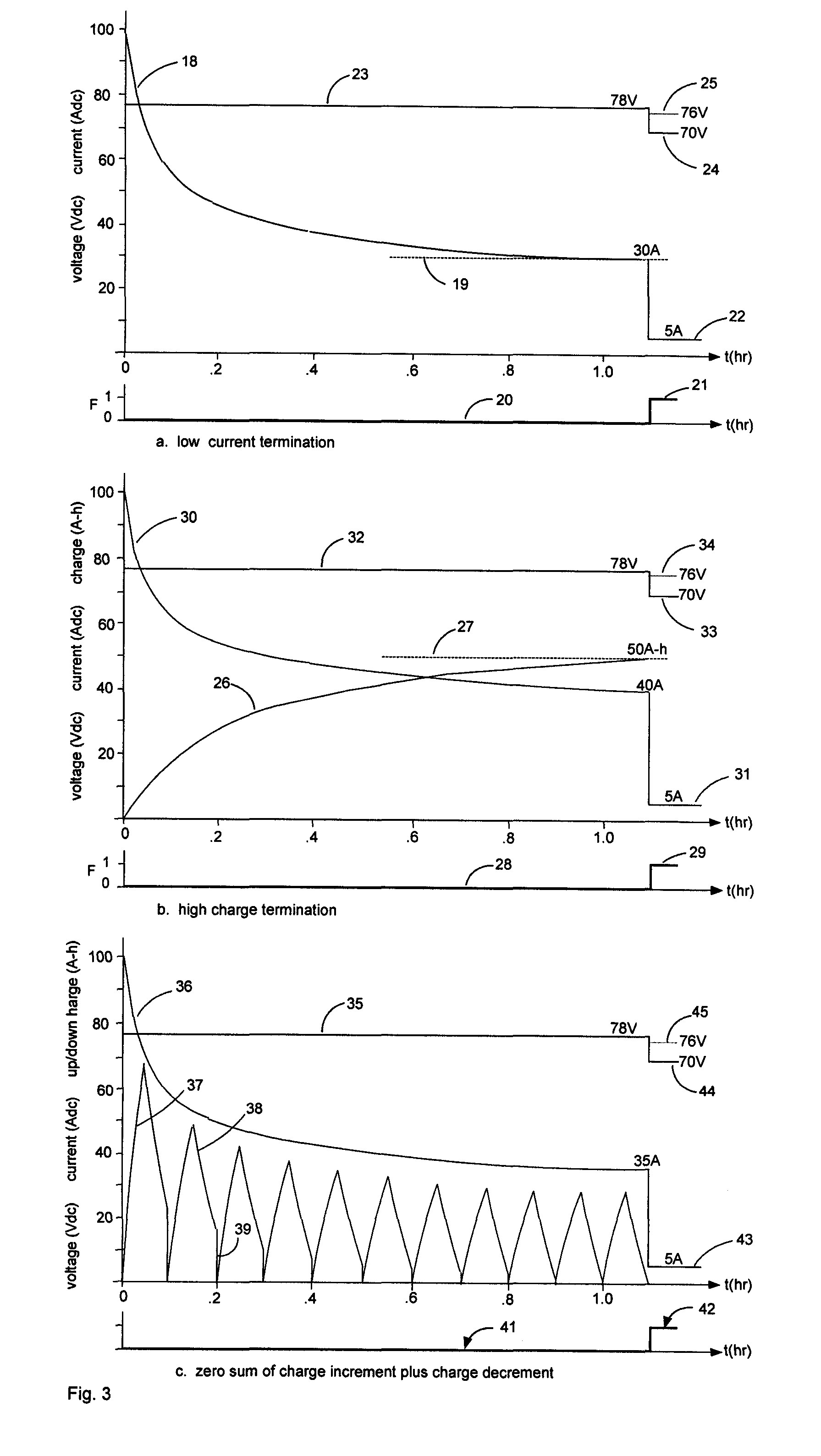Battery charging method and system with three-stage temperature-compensated charge profile
a battery and charge profile technology, applied in the field of battery charging, can solve the problems of reducing the capacity of the battery to accept charge, affecting the usefulness of using di/dt as a preventer of thermal runaway, and affecting the conversion rate of active materials, so as to avoid excessive water consumption and maximize the effect of active material conversion
- Summary
- Abstract
- Description
- Claims
- Application Information
AI Technical Summary
Benefits of technology
Problems solved by technology
Method used
Image
Examples
Embodiment Construction
rofile as is used on locomotives made by EMD and others.
[0023]FIGS. 2a and 2b depict three-stage temperature-compensated charge profiles in accordance with the present invention, for a cool battery and a warm battery, respectively.
[0024]FIGS. 3a-3c are graphs illustrating the three possible absorption-to-float stage transition mechanisms in accordance with the present invention.
[0025]FIG. 4 is a block diagram of a battery charging system in accordance with the present invention.
DETAILED DESCRIPTION OF THE INVENTION
[0026]The present three-stage temperature-compensated charge profile, which is particularly well-suited for use with flooded or valve-regulated lead-acid batteries used in locomotives, is illustrated in FIGS. 2a and 2b, which depict charge voltage vs. time for a cool and a warm battery, respectively. The charge profile progresses through ‘bulk’, ‘absorption’ and ‘float’ stages. During the ‘bulk stage’, the charger regulates the charge current (6) to a predetermined percent...
PUM
 Login to View More
Login to View More Abstract
Description
Claims
Application Information
 Login to View More
Login to View More - R&D
- Intellectual Property
- Life Sciences
- Materials
- Tech Scout
- Unparalleled Data Quality
- Higher Quality Content
- 60% Fewer Hallucinations
Browse by: Latest US Patents, China's latest patents, Technical Efficacy Thesaurus, Application Domain, Technology Topic, Popular Technical Reports.
© 2025 PatSnap. All rights reserved.Legal|Privacy policy|Modern Slavery Act Transparency Statement|Sitemap|About US| Contact US: help@patsnap.com



